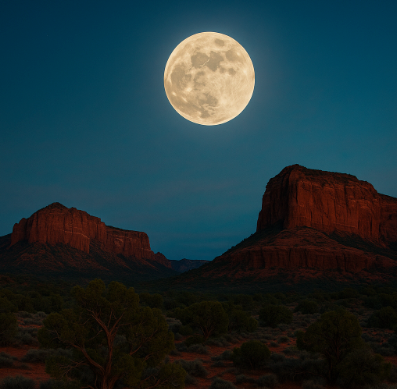Lessons of the Camino: Day Two
- Shelley DeMarco Muellner
- Oct 13
- 4 min read

I arrived in Roncesvalles around 7:30PM, weary but proud. The long climb from St. Jean Pied de Port had tested every ounce of strength I had — physically, mentally, and spiritually. My legs ached, my feet burned, and my heart swelled with the relief of having reached the first official stop on the Camino Francés.
Roncesvalles is a village built around pilgrimage itself. Its name means “Valley of Thorns,” and for centuries it has welcomed pilgrims crossing the Pyrenees. The famous Roncesvalles Monastery Albergue has been sheltering travelers since the Middle Ages — a place of both refuge and reverence.
It’s said that Charlemagne’s army once passed through this very valley, and that pilgrims as far back as the 12th century have rested beneath the same stone walls.
Before checking in, I stopped at the Pilgrim Office to get my Camino credential stamped — a simple but sacred ritual. Every pilgrim carries this “passport” along the route, collecting stamps (called sellos) at albergues, churches, and cafés to mark their journey. It’s both a record of where you’ve been and proof that you’ve walked the path when you finally reach Santiago. My first stamp in Spain felt like a small victory.
I chose to stay at the monastery because it felt like the quintessential Camino experience. The albergue can host nearly 200 pilgrims at full capacity, with bunk beds arranged in small clusters of four, offering both privacy and community in equal measure. It’s not a luxury stay — but it is a rite of passage.

That evening, I attended the Pilgrim’s Mass at the Collegiate Church of Santa María. The chapel itself is breathtaking, its Gothic arches bathed in golden candlelight. The service is offered every night, a centuries-old tradition to bless the travelers as they continue their way. As the priest’s words echoed through the vaulted space, I felt tears well up. The mass was offered in Spanish, and yet we all understood. Pilgrims from every corner of the world, united by one purpose: to walk.
Afterward, I joined the communal dinner at the albergue — simple food, full of warmth. Then it was time for bed.
That’s when things got interesting.
When I reached my bunk, I found someone else’s belongings already there. It turned out to be an honest mix-up — another woman had accidentally taken the wrong bed. We shared a laugh, sorted it out, and she settled into a different bunk. Each floor housed long rows of beds, divided into small pods of four. I knew the night would be noisy, so I came prepared: earplugs, eye mask, and a calm heart.

But even the best-laid plans can’t quiet a foil blanket.
One of the women in my pod was using one of those crinkly, metallic emergency blankets — and every time she moved, it sounded like thunder. It rustled all night long. Sleep became a dance between surrender and amusement. I think I laughed more than I groaned, though by dawn, I was running on fumes.
At 7 a.m., the lights came on and soft Gregorian chants filled the room. It was a beautiful, if abrupt, awakening — a centuries-old alarm clock for modern pilgrims. The albergue closes promptly at 8, so everyone bustled to pack up and move on.
I made my way to the café next door and ordered coffee and a slice of tortilla española — that classic Spanish egg and potato pie. As I sat there, watching pilgrims lace up their boots and set out into the misty morning, I realized two things:
I hadn’t arranged for my large bag to be transported to the next stop.
My feet were in rough shape.
The blisters from the long climb over the Pyrenees had already formed, and my legs were stiff with soreness. I knew that if I pushed forward, I might do real damage — and I still had my workshop with Richard Schwartz ahead.
So I made the executive decision to rest.
I called a taxi and headed to my next destination, Hostel Etxeberri in Eugi, a quiet lakeside village just outside of Zubiri. It turned out to be exactly what I needed — quaint, peaceful, and surrounded by the soft hum of nature. There was a café downstairs and a view of the water that made me exhale for the first time all morning.

The kind owners let me check in early, a small mercy I’ll never forget. I took a hot shower, stretched, and finally allowed my body to rest. Later, I went downstairs for a simple meal — nothing fancy, but nourishing in its own way.
The rest of the day unfolded gently. I caught up on some writing, reflected on the first day’s journey, answered emails, and called Mark and the kids back home. I listened to a few podcasts as the sun dipped behind the hills, feeling both content and grateful.
It wasn’t the Camino day I had planned — but it was the one I needed.
Lesson Two: The Camino teaches that rest is part of the pilgrimage. Listening to your body is not weakness — it’s wisdom.




Comments